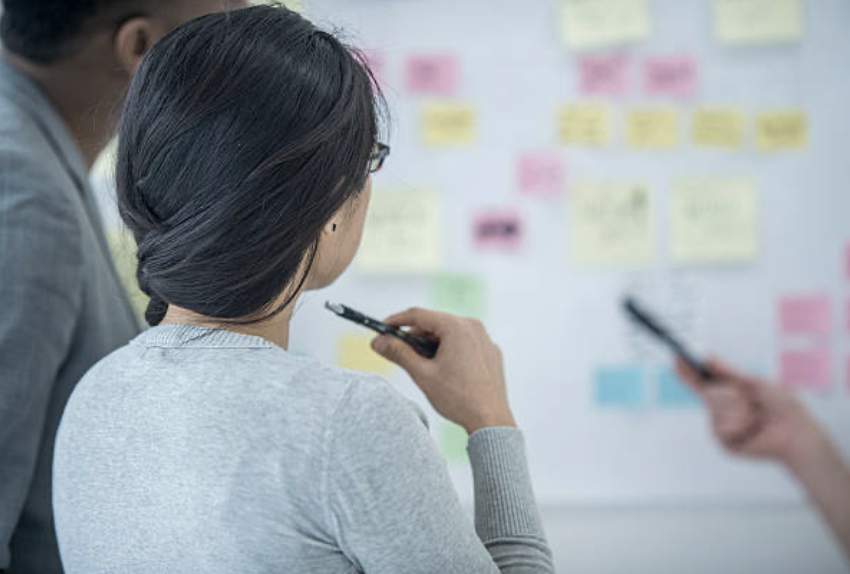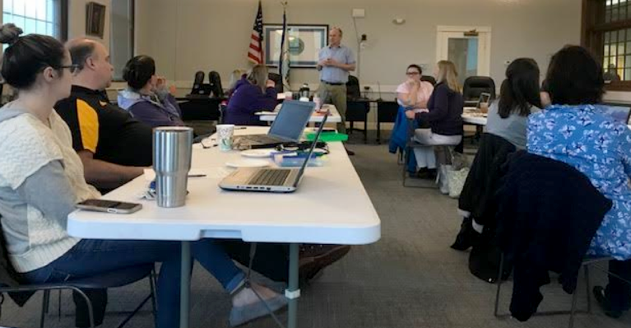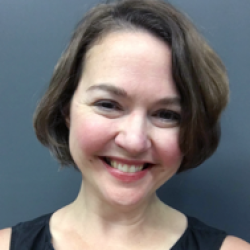
I’ve worked with principals and educators in my district for the past two years to facilitate year-long Project Based Learning professional development courses for teachers. In this, I sought to bring PBL out of “pockets” of classrooms and into an open, aligned space of teaching and learning. I wanted to embed workshops with PBLWorks into a longer series of collaborative opportunities for teachers -- ones where the participants would be able to come together to not only learn about PBL and draft standards-based PBL units, but also to implement those units and get out to observe each other.
After two years and a lot of chart paper, text-based discussions, sticky notes, PBL pep talks, and chocolate, here’s what I have to pass along if you’re interested in bringing this PBL pathway to your district.
1. Assess the need and spread the word.
As a district leader seeking to build K-12 capacity and buy-in for the power of PBL, I learned early on that collaboration was key. My home base is the central office, away from the high school’s bells, middle school’s meeting spaces, and rows of rain boots that line our elementary school hallways. So, I reached out to principals and teacher leaders to learn about the PBL work that had come before me and whether it would be a match to their visions. I met with the superintendent to check in with district priorities. I knelt next to students and said “What do you love about school?” and “Tell me about something you learned that you’ll always remember.” I thought a lot about how to build authentic learning experiences. I talked to teachers about what useful and lasting professional development looked like. I studied our district’s “Successful Habits of Mind” and realized PBL was a pathway to achieving a depth of mastery. I took all these factors together and made a plan.

2. Build your team.
I work in a district that supports both professional development and teacher leadership. We have a history of well-attended summer PD, and some teachers had been asking if we could also offer coursework throughout the school year. This became the impetus for a school-year-based PBL course. I collaborated with principals to write a grant for the 2017-2018 school year that would fund a year-long PBL opportunity. The course would have spots for teachers from all buildings, monthly meetings after school and two workshops with PBLWorks. I shared the course opportunity in the fall and received applications from teachers, as approved by their principals. This first cohort had represented a variety of grade levels, content areas and curricular needs. I set up a Google Classroom and included teachers and administrators as participants, so everyone had access to the online course materials and schedule.
3. Stick to the schedule.
As a teacher, I came to believe there was a beauty in curriculum mapping. Even though I’d differentiate that map to best meet my students’ pace and needs, I held tight to the map I’d initially created. I hold the same creed when I work with adult learners. I’ll change a monthly meeting to focus on the particular needs of the cohort of educators, but I strive to keep tight to my original plan. Over the past two years of the course, I’ve seen this pattern work well:
- Fall: A kick-off meeting and 3-day “Gold Standard PBL 101” workshop with PBLWorks
- Winter: Individual conferencing with teachers and shared readings
- Spring: Unit reflection and a “Sustained Support Visit” from PBLWorks.
Teachers implement their PBL unit when it makes the most sense and share that info out with the cohort, so others can come observe. The goal is that by our spring Sustained Support Visit, teachers have implemented their units and bring artifacts and reflections to that day.
4. Cheerlead!
Over the past two years, I’ve learned how much time, heart, and resilience it takes to write and teach a PBL unit. I’ve seen full curriculum drafts be written during three days of PBLWorks workshop time... and then be completely revised back the classroom. Grand plans for construction were thwarted when pipes burst and classrooms were relocated. A parent who was the perfect contact moved away. Rain poured on the “place-based learning” day. As anyone who works in schools knows, even the best laid lesson plans fray when faced with the daily adventure that is teaching. And my role as a district leader and course facilitator? I cheerlead. I remind participants that all curriculum writing and implementing is a journey. I keep the PBL ship sailing. I listen, reconnect and reinforce. I provide really good snacks. Writing project-based curriculum is hard work. It asks teachers to put themselves out there -- with their colleagues, their teaching schedules and their own time. We need to visibly support PBL teachers.
5. Keep moving forward.
Each year has looked a little different in the PBL course. I aimed to add in peer observations for the cohort members in year one, but it proved difficult to coordinate. I brought in two “PBL Peer Coaches” -- year one members who came back to work with the second cohort and me -- with the goal of them leading the peer observation charge. I’ve learned that it works well to have teaching partners or grade-level teams take the course together. Collaborating with Rich Lehrer, our PBLWorks National Faculty consultant, has allowed me to be a PBL student, too (in fact, a group of administrators and I wrote our own PBL unit during the first year’s PBL 101 workshop!).
Next year, the high school principal and I are collaborating to bring PBL there. We’ll try out having participants videotape PBL lessons and do peer feedback that way. The PBL plan continues to evolve. Overall, I hold tight to my “why” of bringing PBL into Ipswich Public Schools: to give teachers and students powerful learning opportunities where we work together to make differences in our community and our world. Every step of the journey matters in PBL. Keep moving forward.

